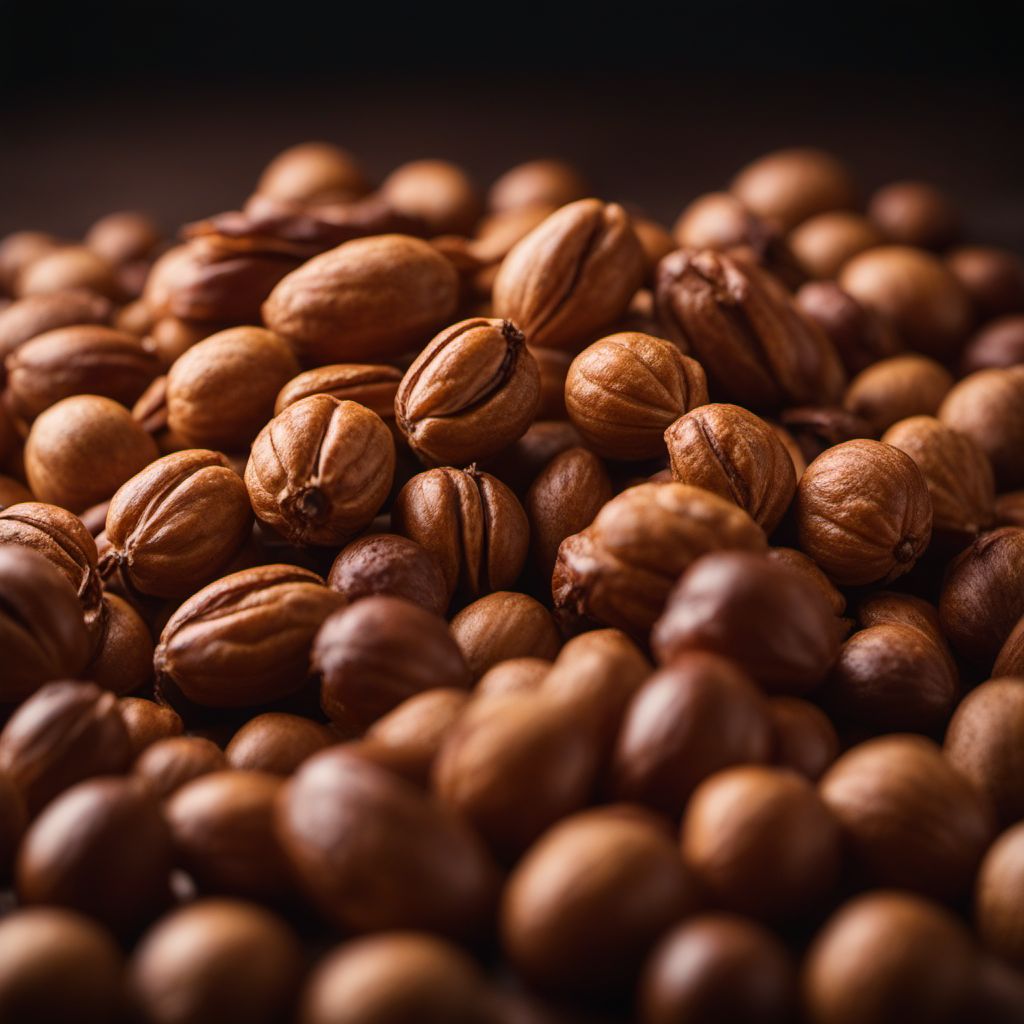
Ingredient
Nutty flavour
A Symphony of Nuttiness
The nutty flavor is characterized by a rich, earthy taste that resembles the essence of nuts. It adds a delightful complexity to both sweet and savory dishes, enhancing their overall flavor profile. Whether it's the subtle nuttiness of almonds, the robustness of walnuts, or the creaminess of cashews, the nutty flavor brings a symphony of taste to the table.
Origins and history
The nutty flavor has been cherished in culinary traditions around the world for centuries. Nuts have been a staple in many cuisines, providing not only a source of sustenance but also a unique taste experience. From ancient civilizations to modern-day gastronomy, the nutty flavor continues to captivate palates and inspire innovative culinary creations.
Nutritional information
The nutty flavor offers a range of nutritional benefits, depending on the specific nut or ingredient. Nuts are generally high in healthy fats, protein, fiber, vitamins, and minerals. They are also a good source of antioxidants and may have various health-promoting properties. However, it's important to consume nuts in moderation due to their calorie density.
Allergens
Nuts, which are associated with the nutty flavor, can be allergenic for some individuals. Common nut allergens include peanuts, tree nuts (such as almonds, walnuts, cashews), and hazelnuts. It's crucial to be aware of any allergies or sensitivities when incorporating the nutty flavor into dishes.
How to select
When selecting ingredients with a nutty flavor, choose fresh and high-quality nuts or nut-based products. Look for nuts that are free from any signs of mold, rancidity, or insect damage. Opt for whole nuts instead of pre-packaged or processed options whenever possible. If using nut-based products like nut butters or oils, check the label for any added ingredients or potential allergens.
Storage recommendations
To maintain the freshness and quality of nuts, store them in a cool, dry place in an airtight container. It's best to keep them away from direct sunlight or heat sources, as they can turn rancid. If storing nut-based products like nut butters or oils, follow the manufacturer's instructions for storage recommendations.
How to produce
Producing the nutty flavor involves sourcing and processing various nuts or nut-based products. Nuts can be grown in specific regions or cultivated in controlled environments. The process may include harvesting, shelling, roasting, grinding, or pressing to extract the nutty essence. Some nuts can also be used to produce oils or butters, which intensify the nutty flavor in dishes.
Preparation tips
The nutty flavor can be incorporated into a wide range of dishes and cuisines. It adds depth to baked goods like cookies, cakes, and bread. Nuts can be used as toppings for salads, oatmeal, or yogurt, providing a satisfying crunch. Nut butters can be spread on toast, used as a dip, or incorporated into sauces and dressings. The nutty flavor also pairs well with chocolate, fruits, and vegetables, creating harmonious flavor combinations.
Substitutions
The nutty flavor is commonly found in various cuisines around the world. Nuts are cultivated in different regions, depending on the specific type of nut. For example, almonds are widely grown in California, while cashews are native to Brazil and India. Walnuts are commonly found in North America and Europe. The availability of nuts may vary depending on the region and season.
More ingredients from this category » Browse all

Barley flavour
The Versatile Grain: Barley

Chocolate flavour
Decadent Delight

Apple green flavour
The Vibrant Essence of Green Apples

Peach flavour
The Essence of Summer

Parsley flavour
The Versatile Herb: Parsley's Flavorful Impact on Culinary Delights

Lime flavour
The Zesty Elixir: Exploring the Essence of Lime

Bubblegum flavour
"Sweet and Playful: Exploring the World of Bubblegum Flavor"

Grape concord flavour
The Bold and Sweet Essence of Concord Grapes

Hibyscus flavour
"The Vibrant Essence: Exploring the Delightful Hibiscus Flavor"

Cola flavour
The Essence of Fizzy Delight

Bacon flavour
The Smoky Sensation of Bacon

Mushroom flavour
The Umami Elixir